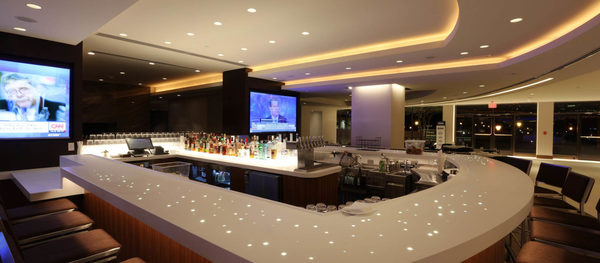

Boca Explains How Dim-to-Warm Lighting Works
Industry Topics | February 03, 2022 | The Lighting Exchange
How does Dim-to-Warm Lighting Work?
Consumer lighting needs and real-world applications are continually evolving. LED tunable light technology has stepped up to the challenge by providing various lighting capabilities to accommodate any desired atmosphere. This is achieved through warm dimming, also referred to as dim-to-warm or black-body dimming.
Physicists created a theoretical reference source called a black body radiator. When heated, a solid object will glow and then shift in color with heat. This trend will track continuously along the visual spectrum. The brightness of a given object can be measured as a function of a wavelength or its spectrum. The hotter an object burns, it will generally emit more light at shorter wavelengths, and a cooler object will emanate more light at longer wavelengths. This continuous spectrum has a broad peak that can be used to conclude the temperature of the object. This spectrum is called a thermal spectrum or a black-body spectrum.
Dim-to-warm simulates an incandescent ambiance by adjusting the LED color temperature as you dim. This type of lighting can be dimmed down to a relaxing amber tone, similar to that of a candle. It provides the same warmth and glow as the halogen dimming performance.
It is typically designed for 2700-3000 (Kelvin) at full output and decreases in correlated color temperature (CCT) as the output is reduced. This output can go down as low as 1800K (the color of candlelight). The light color becomes increasingly warm in appearance (more yellow and red) as the product dims.
Applications for Warm-Dimming
Light color and the dimming quality of fixtures are highly valued in hospitality settings such as restaurants, hotel lobbies, guestrooms, ballrooms, and theaters. It is also an excellent addition to any residential space.
Dim-to-warm’s methodology can accentuate any area and bring out its best features. The warm-colored lighting can create the desired look and feel that hospitality managers want their customers to experience. The light is reminiscent of the warmth of home and can be an effective way to provide a calm, relaxing atmosphere for clientele.
Lighting Controls for Warm-to-Dim Fixtures
Dim-to-warm lighting requires at least three LED primaries to dim along the black body curve like incandescent lighting.
This type of product’s dimming is associated with the color change; therefore, there is only one control signal and, consequently, only one controller per group of luminaires that dim in unison. Some systems can accomplish this function with a phase-cut dimmer, where the dimming information is carried in the voltage waveform. This tactic may not have as much dimming resolution or smoothness as a control system using 0-10V, DALI, or DMX procedures. The latter three require separate wiring for the intensity/color signal and luminaire power.
Dim-to-warm luminaires can be equipped with a wireless receiver for control by a wireless transmitter using Zigbee, Wi-Fi, Bluetooth, or hard-wired to facility power.
Other News Content by:
Boca Lighting and Controls
Celebrating 30 Years of Innovation
Industry Topics | December 02, 2025 | Boca Lighting and ControlsEye-Catching Exteriors for Every Retail Space
Featured Products | October 06, 2025 | Boca Lighting and ControlsElevate Public Spaces with Boca
Featured Products | August 05, 2025 | The Lighting ExchangePerformance That Goes the Distance
Featured Products | June 24, 2025 | The Lighting ExchangeElevate Hospitality Spaces with Accent Lighting
Featured Products | February 20, 2025 | The Lighting Exchange
